What is Happening in the Global Economy: Latest Updates and Trends
.gif)
The global economy is a complex and ever-changing system that affects the lives of people all around the world. Understanding what is happening in the global economy can be challenging, as there are many different factors that contribute to its overall health and performance. From changes in trade policies to shifts in consumer spending habits, there are many different forces at play that can impact the global economy in both positive and negative ways.
One of the biggest challenges facing the global economy today is the ongoing COVID-19 pandemic. The pandemic has had a significant impact on the global economy, causing widespread disruptions to supply chains, trade, and consumer spending. As countries around the world work to contain the spread of the virus and roll out vaccination programs, there is hope that the global economy will begin to recover from the pandemic in the coming months.
Despite the challenges facing the global economy, there are also many opportunities for growth and development. Advances in technology, changes in consumer preferences, and new trade agreements are just a few of the factors that could help to drive economic growth and prosperity in the years to come. By staying informed about what is happening in the global economy, individuals and businesses can position themselves for success and navigate the challenges and opportunities that lie ahead.
Global Economic Outlook
The global economy has been significantly impacted by the COVID-19 pandemic, which has led to a sharp contraction in economic activity. However, there have been signs of recovery and growth in recent months, although vulnerable economies are still at risk.
Impact of COVID-19
The pandemic has had a profound impact on the global economy, leading to a sharp contraction in economic activity, job losses, and a decline in investment. The manufacturing sector has been hit particularly hard, with supply chains disrupted and factories shut down. The labor market has also been severely impacted, with many people losing their jobs or being furloughed.
Recovery and Growth
Despite the challenges posed by the pandemic, there have been signs of recovery and growth in recent months. The United States and Asia have seen strong economic growth, while the Eurozone has also shown signs of improvement. The World Economic Forum has predicted that global growth will reach 5.5% in 2021, up from 3.5% in 2020.
Vulnerable Economies
While there have been signs of recovery and growth, vulnerable economies are still at risk. The Federal Reserve and the European Central Bank have both indicated that they will keep interest rates low to support economic growth. However, there are concerns that this could lead to a balance of financial risks, particularly if inflation rises.
The World Bank has also warned that the global economy is likely to slow sharply this year, hobbled by high interest rates, the repercussions of Russia's invasion of Ukraine, and the lingering effects of the coronavirus pandemic. It estimates that the international economy will expand just 2.1% in 2023 after growing 3.1% in 2022.
In conclusion, the global economic outlook is mixed, with signs of recovery and growth in some areas but vulnerable economies still at risk. The impact of the pandemic continues to be felt, and governments and central banks will need to continue to provide support to ensure a sustained recovery.
Inflation and Output
Inflation is one of the most important economic indicators that affects the global economy. It is the rate at which the general level of prices for goods and services is rising, resulting in a decrease in the purchasing power of money. Inflation has a direct impact on the output of an economy. When inflation is high, it can lead to a decrease in output, as consumers are less likely to spend their money due to rising prices.
US Inflation
US inflation has been a major concern for the global economy in recent years. According to The World Economic Forum, US inflation has stayed at a 40-year high. This has been driven by food and energy costs in the wake of the COVID-19 pandemic, and has been exacerbated by the Russian invasion of Ukraine. The US Federal Reserve has been taking measures to control inflation by raising interest rates, but this has had a limited effect so far.
Annual Inflation
Annual inflation is another important measure of inflation that is closely watched by economists and policymakers. According to McKinsey, annual inflation refers to the broad rise in the prices of goods and services across the economy over time, eroding purchasing power for both consumers and businesses. Inflation has been rising across the world, with April 2023 seeing a CPI (consumer price index) increase of 8.3%, according to The World Economic Forum.
Impact on Manufacturing
Inflation has a direct impact on the manufacturing sector, which is a key driver of economic growth. According to The Economist, surging consumer prices and rising interest rates have made it difficult for manufacturers to keep up with demand. The rising cost of raw materials and energy has also put pressure on manufacturers to increase prices, which in turn has led to a decrease in demand for their products. This has resulted in a decrease in output and a slowdown in economic growth.
In conclusion, inflation is a critical economic indicator that affects the global economy in numerous ways. It has a direct impact on the output of an economy, and can lead to a decrease in economic growth if left unchecked. Policymakers and economists must work together to find ways to control inflation and ensure that the global economy remains stable and prosperous.
Regional Economic Updates
China's Economic Policies
China's economy continues to grow at a steady pace, with the country's GDP projected to increase by 6.1% in 2023, according to the World Bank's Spring 2023 Regional Economic Updates. The Chinese government has implemented a series of measures aimed at stabilizing the economy and promoting sustainable growth, including tax cuts, infrastructure spending, and monetary easing.
One of the most significant economic policies in China is the Belt and Road Initiative, which aims to increase regional connectivity and promote economic development across Asia, Europe, and Africa. The initiative has already seen significant investment in infrastructure projects, including railways, ports, and highways, and is expected to continue driving economic growth in the region.
Eurozone's Economic Performance
The Eurozone's economic performance has been mixed, with growth slowing sharply in 2022 due to a surge in inflation, the Russian invasion of Ukraine, and the tightening of monetary policy. However, the region's economy is expected to rebound in 2023, with the World Bank projecting GDP growth of 4.2%.
To support economic growth, the European Central Bank has maintained a loose monetary policy, keeping interest rates low and purchasing government bonds. However, the region continues to face significant challenges, including high levels of youth unemployment and a slowdown in manufacturing activity.
Asia's Economic Growth
Asia remains a key driver of global economic growth, with the region's economy projected to expand by 6.5% in 2023, according to the World Bank. The growth is driven by strong domestic demand, particularly in China and India, and robust export growth.
However, the region also faces significant challenges, including rising inflation, geopolitical tensions, and the ongoing COVID-19 pandemic. To support economic growth, many countries in the region have implemented monetary easing policies and increased infrastructure spending.
Overall, the global economy is facing a challenging and uncertain environment, with many countries struggling to balance economic growth with social and environmental concerns. However, with the right policies and investments, there is potential for sustained and inclusive growth in the years ahead.
Investments and Wealth
Investments and wealth play a crucial role in the global economy. The rise in global wealth has been significant over the past few decades, with asset price inflation creating about $160 trillion in "paper wealth" between 2000 and 2021 [McKinsey]. However, this growth has been accompanied by a rise in debt, with each $1.00 in net investment generating $1.90 in net new debt [McKinsey].
Impact of Interest Rates
Interest rates play a significant role in the investment and wealth landscape. Changes in interest rates can impact the value of investments and the cost of borrowing, which can, in turn, impact the economy. For example, when interest rates are low, it can encourage borrowing and spending, which can stimulate economic growth. Conversely, when interest rates are high, it can discourage borrowing and spending, which can slow economic growth.
Personalized Content Collection
Personalized content collection is becoming increasingly important in the investment and wealth management space. With the rise of digital technologies, investors can access a wealth of information and data about their investments. This information can be used to create personalized investment strategies that take into account an investor's goals, risk tolerance, and investment preferences.
Overall, investments and wealth have a significant impact on the global economy. The rise in global wealth has been significant, but it has also been accompanied by a rise in debt. Interest rates play a crucial role in the investment and wealth landscape, and personalized content collection is becoming increasingly important in the investment and wealth management space.
Global Economic Governance
Global economic governance refers to the management of global economic affairs by international organizations and governments. This section will explore the role of the World Bank and IMF, Federal Reserve and ECB, and World Economic Forum's Global Agenda.
World Bank and IMF
The World Bank and International Monetary Fund (IMF) are two of the most important international organizations involved in global economic governance. The World Bank provides loans and technical assistance to developing countries, while the IMF provides emergency loans to countries experiencing financial crises. Both organizations work to promote economic growth and reduce poverty around the world.
The World Bank and IMF also play a key role in setting global economic policies. They work with governments and other international organizations to develop policies that promote economic stability and growth. They also monitor economic developments around the world and provide advice on how to address economic challenges.
Federal Reserve and ECB
The Federal Reserve and European Central Bank (ECB) are two of the most important central banks in the world. The Federal Reserve is responsible for monetary policy in the United States, while the ECB is responsible for monetary policy in the eurozone.
Both central banks play a key role in global economic governance. They work to maintain price stability and promote economic growth in their respective regions. They also work with other central banks around the world to coordinate monetary policy and address global economic challenges.
World Economic Forum's Global Agenda
The World Economic Forum's Global Agenda is a platform for leaders from around the world to come together and discuss global economic issues. The agenda covers a wide range of topics, including economic growth, job creation, and sustainable development.
The Global Agenda is an important forum for discussing global economic challenges and developing solutions. It brings together leaders from government, business, and civil society to share ideas and best practices. The agenda also provides a platform for developing partnerships and collaborations to address global economic challenges.
In conclusion, global economic governance is an important aspect of the global economy. The World Bank and IMF, Federal Reserve and ECB, and World Economic Forum's Global Agenda are just a few examples of the many organizations involved in global economic governance. These organizations work to promote economic stability and growth, reduce poverty, and address global economic challenges.
Terms of Use
When accessing information about the global economy, it is important to understand the terms of use for any website or platform. These terms outline the rules and regulations that govern how users can interact with the site and its content. It is important to read and understand these terms before using any website or platform, as they can have legal implications.
One common aspect of terms of use is the use of cookies. Cookies are small files that are stored on a user's device when they visit a website. They are used to track user behavior and preferences, and can be used to personalize the user experience. However, cookies can also be used to collect sensitive information about users, such as their browsing history or location. As such, it is important to understand how cookies are used on a website and to adjust browser settings accordingly.
Another important aspect of terms of use is the licensing of content. Many websites and platforms use Creative Commons Attribution-NonCommercial-NoDerivatives 4.0 International Public License, which allows users to share and use content for non-commercial purposes, as long as they give attribution to the original creator and do not make any changes to the content. It is important to understand the licensing of content on a website, as it can impact how users can share and use information.
In summary, understanding the terms of use for any website or platform is important when accessing information about the global economy. This includes understanding how cookies are used and adjusting browser settings accordingly, as well as understanding the licensing of content and how it impacts sharing and use of information.
Conclusion
In conclusion, the global economy is facing a mix of challenges and opportunities. While developed countries such as the United States and China are expected to grow robustly, developing countries are facing a slow recovery. The COVID-19 pandemic has had a devastating impact on the global economy, with trade patterns and GDP being significantly affected.
The policies of governments and central banks play a crucial role in shaping the economic landscape. Policies such as vaccination drives, education, and climate change mitigation measures are crucial for sustainable economic growth.
Comments from experts and reliable sources suggest that the global economy is facing a recession, with no official, globally recognized definition. However, the US has opted to use a more open definition. It is essential to keep an eye on the economic indicators to stay updated on the state of the global economy.
Ads and marketing campaigns can also influence the economy by boosting consumer confidence and spending. However, it is crucial to ensure that such campaigns are ethical and do not mislead consumers.
In conclusion, the global economy is a complex and dynamic system that is influenced by various factors. It is essential to stay informed and aware of the latest economic developments to make informed decisions.
Frequently Asked Questions
What is the current state of the global economy?
As of June 07, 2023, the global economy is showing signs of recovery. According to the World Economic Forum, the global economy is expected to grow by 4.4% in 2023. The United States and China are expected to lead the economic recovery, while developing countries may experience a slower recovery.
What are the economic forecasts for the next 5 years?
The International Monetary Fund (IMF) predicts that the global economy will grow by 3.5% in 2024 and 3.6% in 2025. The IMF also predicts that the United States and China will continue to lead the global economic growth, while other developed countries will experience slower growth.
Are there any current economic issues in 2023?
As of 2023, there are several economic issues that are affecting the global economy. The ongoing trade tensions between the United States and China, as well as other countries, are causing uncertainty and volatility in the global economy. Additionally, rising inflation rates in some countries are posing a threat to economic stability.
Why is the world economy falling?
As of June 07, 2023, the world economy is not falling. In fact, it is showing signs of recovery. However, in the past, the world economy has experienced downturns due to various factors such as financial crises, recessions, and global conflicts.
Is a recession expected in 2023?
As of June 07, 2023, there is no indication of an impending recession. However, economic forecasts are subject to change based on various factors such as global events, government policies, and market conditions.
Is the global economy weakening?
As of June 07, 2023, the global economy is not weakening. In fact, it is showing signs of recovery. However, economic growth rates may vary across different countries and regions based on various factors such as government policies, market conditions, and geopolitical tensions.
Tim Moseley




.gif)


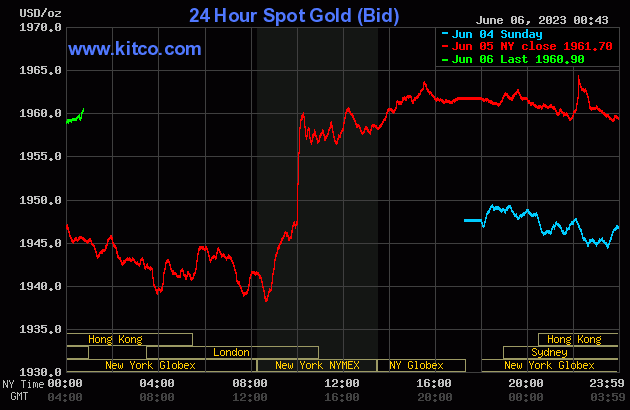
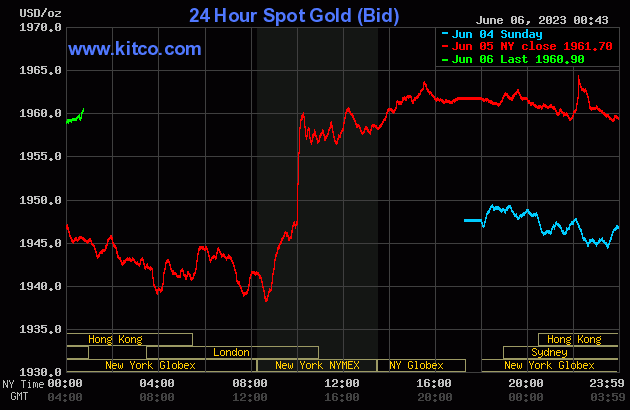
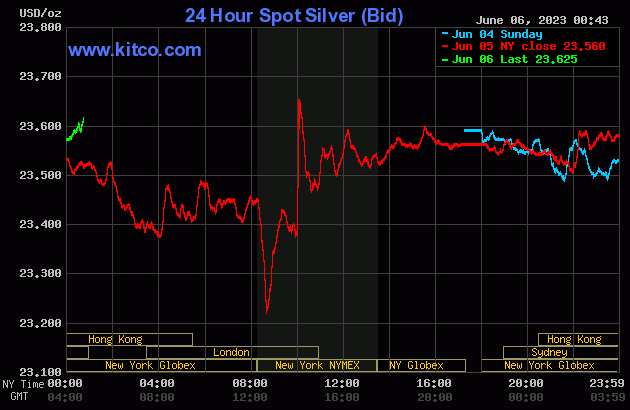
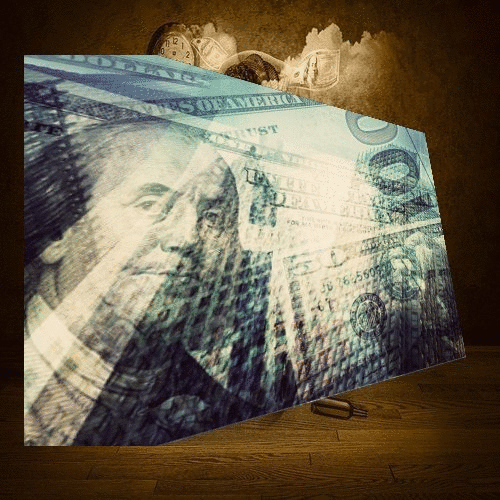






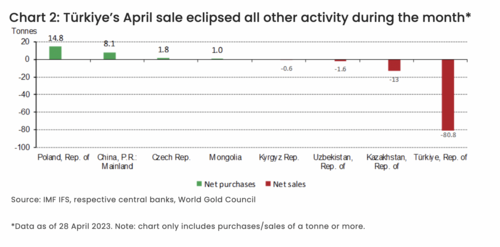
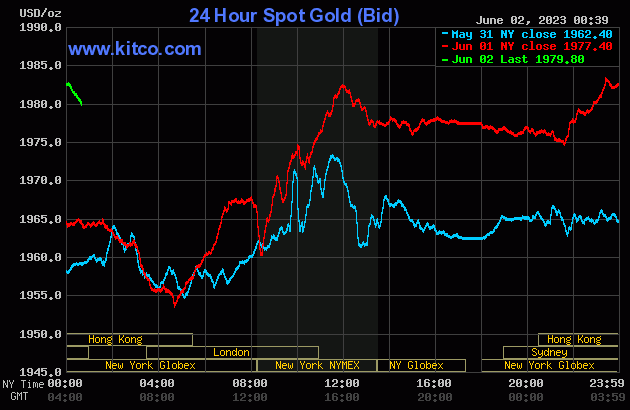
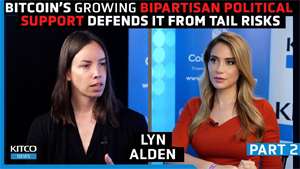 Bitcoin voters could decide close U.S. elections as bipartisan political support grows – Lyn Alden
Bitcoin voters could decide close U.S. elections as bipartisan political support grows – Lyn Alden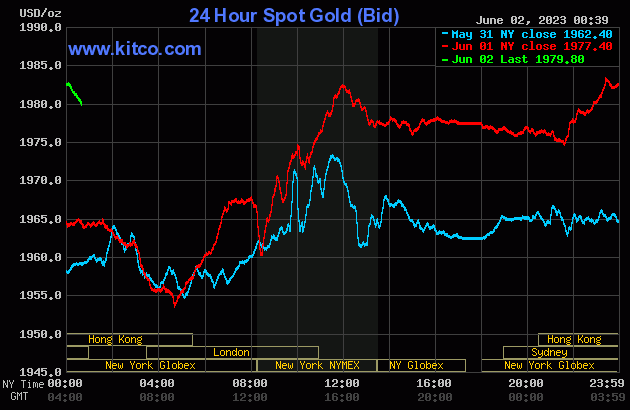
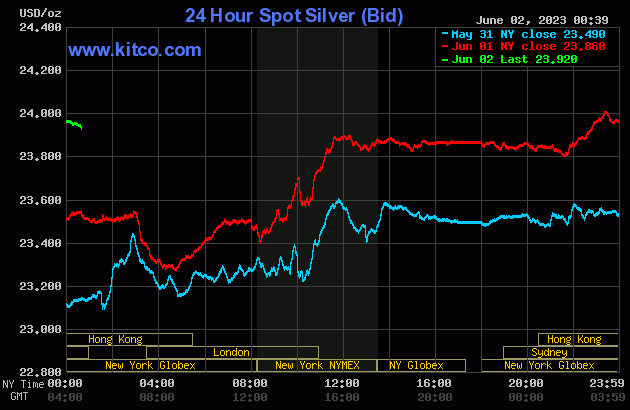
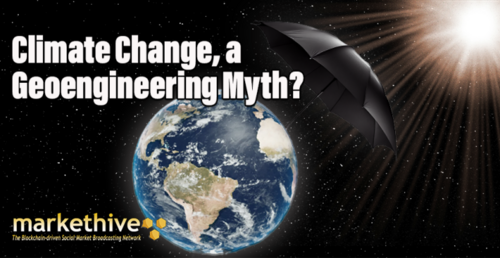
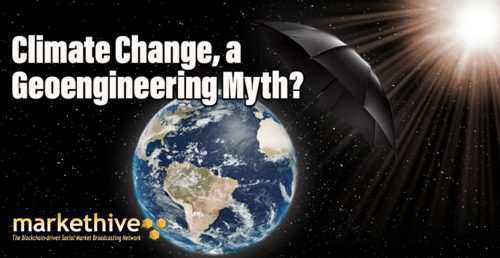

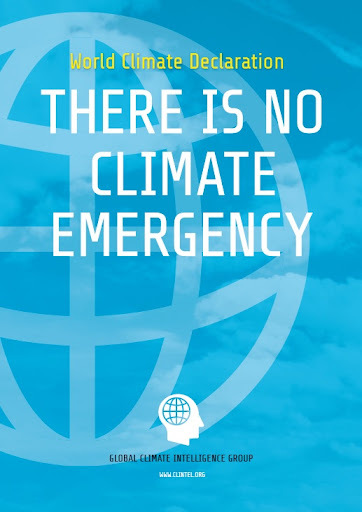

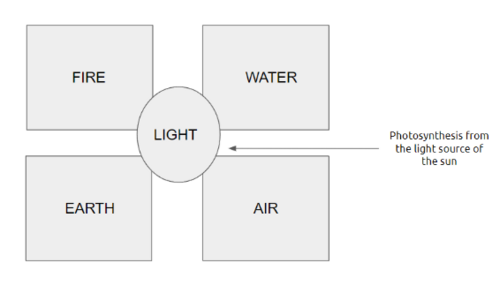

(6).gif)

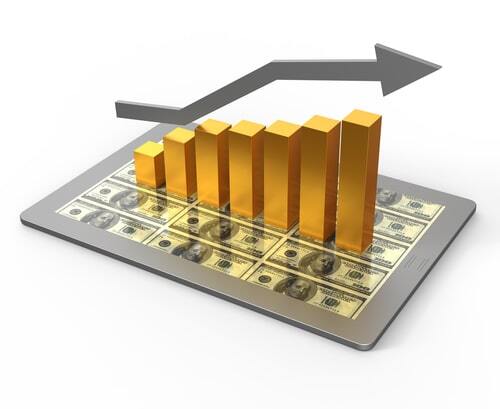
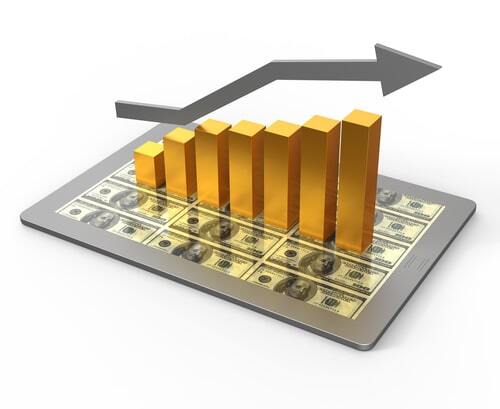 The gold market posted its first monthly loss since February, wrapping May down about $36. As markets eye the crucial Congress vote to lift the debt ceiling, some Federal Reserve speakers are pushing for a "hawkish pause" at the June 13-14 meeting.
The gold market posted its first monthly loss since February, wrapping May down about $36. As markets eye the crucial Congress vote to lift the debt ceiling, some Federal Reserve speakers are pushing for a "hawkish pause" at the June 13-14 meeting.